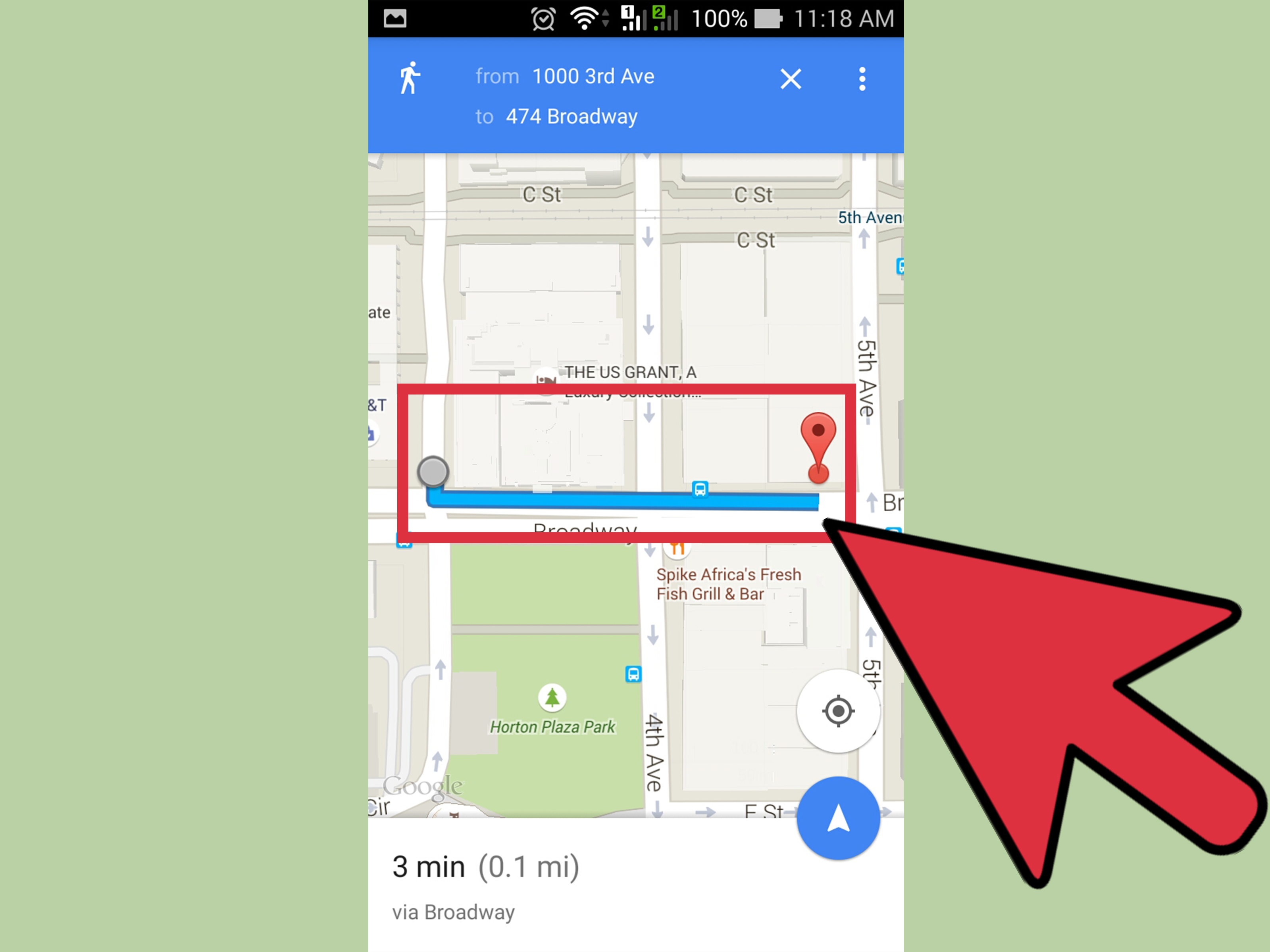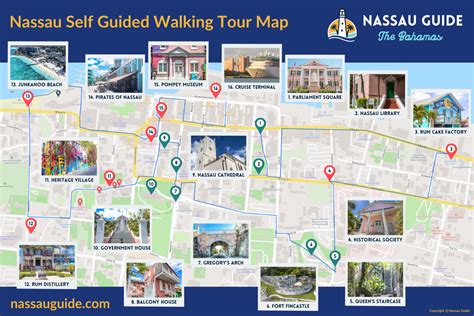Make A Walking Map

Welcome to the ultimate guide on creating your very own walking map! Whether you're a city explorer, a tourist, or simply someone who loves discovering new places on foot, a personalized walking map can be an invaluable tool. In this comprehensive article, we will delve into the world of map-making, offering expert insights and practical tips to help you design an accurate and engaging walking map. So, lace up your walking shoes, grab your favorite mapping tools, and let's embark on this exciting journey together!
Unleashing the Power of Walking Maps

Walking maps have become an essential companion for urban adventurers and travelers alike. These maps provide a unique perspective, allowing users to explore cities and destinations at a more intimate pace. By creating your own walking map, you gain the freedom to curate routes, highlight hidden gems, and offer personalized recommendations. But how exactly do you go about crafting a walking map that not only guides but also captivates its users? Let’s dive into the process and uncover the secrets of successful map-making.
Step 1: Choosing Your Destination and Theme

The first step in crafting a walking map is selecting the perfect destination. Consider your target audience and the type of experience you want to curate. Are you focusing on a bustling city center, a historic neighborhood, or perhaps a scenic coastal path? Once you’ve decided on the location, it’s time to define the theme. Will your map highlight architectural marvels, culinary delights, or off-the-beaten-path adventures? A well-defined theme adds depth and character to your map, making it more engaging for users.
Example: A Culinary Journey through Paris
Imagine creating a walking map that takes users on a gastronomic tour of Paris. Your map could feature iconic bakeries, hidden bistros, and charming cafes, offering a delectable journey through the City of Lights. By including mouthwatering descriptions and insider tips, you transform a simple map into a culinary adventure.
| Destination | Theme |
|---|---|
| New York City | Urban Art Exploration |
| London | Royal Palaces and Gardens |
| Tokyo | Anime and Manga Culture |

Step 2: Gathering Data and Researching Landmarks
Accurate data is the backbone of a reliable walking map. Gather as much information as possible about your chosen destination. Start by researching landmarks, points of interest, and must-see attractions. Utilize online resources, travel guides, and local insights to compile a comprehensive list. Ensure you include a diverse range of attractions, from iconic landmarks to lesser-known gems, to cater to various user preferences.
Researching Techniques
- Online Resources: Websites, blogs, and travel forums offer a wealth of information. Look for trusted sources and user-generated content to gain insights into popular attractions.
- Local Guides and Publications: Consult local guidebooks, magazines, and official tourism websites. These resources often provide insider knowledge and hidden gem recommendations.
- Social Media Platforms: Explore social media platforms like Instagram and Twitter. Hashtags and geotags can lead you to popular spots and provide visual inspiration.
- Local Businesses and Tourism Offices: Reach out to local businesses and tourism offices. They often have valuable information and can suggest unique experiences.
Example: Researching London’s Royal Landmarks
If your theme is “Royal Palaces and Gardens” in London, you’d research iconic landmarks like Buckingham Palace, Kensington Palace, and the Tower of London. Additionally, you could uncover lesser-known royal gems like Kew Palace and the Queen’s House at Greenwich.
| Landmark | Description |
|---|---|
| Buckingham Palace | The official residence and administrative headquarters of the British monarch, offering a glimpse into royal life. |
| Kew Palace | A historic royal residence set within the beautiful Kew Gardens, providing a serene escape from the city. |
| Tower of London | A UNESCO World Heritage Site, famous for its medieval architecture and dark history. |
Step 3: Mapping the Route and Landmarks
Now it’s time to bring your walking map to life! Choose a mapping platform or software that suits your needs and skill level. Popular options include Google Maps, ArcGIS, and Mapbox. These tools allow you to create custom maps, add markers, and design routes.
Mapping Software Recommendations
- Google Maps: A user-friendly option with a simple interface, perfect for beginners. It offers pre-existing map data and allows for easy customization.
- ArcGIS: A powerful mapping platform with advanced features, ideal for professionals and experienced map-makers. It provides detailed data and customization options.
- Mapbox: A versatile mapping tool that offers customization and the ability to create unique, branded maps. It’s a great choice for those seeking a blend of simplicity and creativity.
Designing the Route
When designing your route, consider the following:
- Distance and Time: Calculate the approximate distance and estimated time for your walking route. Ensure it’s achievable for the average walker and fits within the desired time frame.
- Landmark Proximity: Arrange landmarks along the route, ensuring they are within a reasonable walking distance from each other. This keeps the experience cohesive and engaging.
- Scenic Views and Amenities: Incorporate scenic spots and rest areas along the way. Consider including parks, viewpoints, or cafes where users can relax and enjoy the surroundings.
- Wayfinding and Navigation: Clearly mark the route with easy-to-follow directions. Include landmarks or street names as reference points to help users navigate effortlessly.
Example: A Day in Tokyo’s Anime World
For a walking map focused on anime and manga culture in Tokyo, you might start at the iconic Akihabara district, known for its anime shops and cafes. The route could then take walkers to the Tokyo Anime Center, followed by a visit to the famous Odaiba district, offering stunning views of the city and a unique anime experience.
Step 4: Adding Engaging Content and Personal Touches

A walking map is not just about navigation; it’s an immersive experience. Add engaging content and personal touches to make your map truly special.
Content Ideas
- Historical Insights: Provide brief historical facts or anecdotes about the landmarks. This adds depth and allows users to connect with the destination’s past.
- Local Legends and Stories: Include local legends or urban myths associated with the landmarks. These stories can create a sense of mystery and intrigue.
- Practical Tips and Recommendations: Offer practical advice, such as the best time to visit, recommended routes, or nearby amenities like restrooms and restaurants.
- User-Generated Content: Encourage users to share their experiences and photos. This adds a dynamic element to your map, making it more interactive and engaging.
Personalization Techniques
- Color Coding: Use a color-coded system to categorize landmarks or attractions. This helps users quickly identify different types of experiences.
- Iconic Markers: Design custom markers or icons to represent different landmarks. These visual cues can make your map more visually appealing and memorable.
- Interactive Elements: Incorporate interactive features like pop-up boxes or slide-outs to provide additional information. This adds an element of surprise and encourages users to explore further.
Example: Urban Art Exploration in New York City
For a walking map centered around urban art, you might include a section dedicated to street art hotspots. Provide detailed descriptions of the artworks, their locations, and the artists behind them. Additionally, offer tips on the best times to visit, as some street art is only visible during certain hours or seasons.
Step 5: Testing and Refining Your Walking Map
Before releasing your walking map to the public, it’s crucial to test and refine it. Walk the route yourself and gather feedback from a diverse group of testers. Their insights can help identify any issues or improvements needed.
Testing Checklist
- Accuracy: Ensure all landmarks and routes are correctly marked and easily navigable.
- Clarity and Readability: Check that the map is easy to read and understand, with clear directions and labels.
- Usability: Test the map’s functionality and user experience. Are the features intuitive and user-friendly?
- Content Verification: Verify the accuracy of the information provided, including opening hours, prices, and contact details.
Refining Techniques
- User Feedback: Listen to user suggestions and make adjustments based on their feedback. This iterative process can lead to a more refined and user-friendly map.
- A/B Testing: Create multiple versions of your map with slight variations. Test them with a small group and analyze the results to determine the most effective design.
- Professional Review: Seek feedback from professional map-makers or designers. Their expertise can help elevate your map to the next level.
Step 6: Publishing and Promoting Your Walking Map
Once your walking map is polished and ready, it’s time to share it with the world! Choose a suitable platform or medium for publishing. This could be a dedicated website, a mobile app, or even a physical print map.
Publication Options
- Website: Create a dedicated website for your walking map. Include interactive features, user-generated content, and additional resources.
- Mobile App: Develop a mobile application that users can download and access offline. This provides a seamless and convenient experience for walkers.
- Print Map: If you prefer a traditional approach, consider printing your map as a physical guide. This can be distributed at tourist information centers or sold as a collectible item.
Promotion Strategies
- Social Media Marketing: Utilize social media platforms to promote your walking map. Share engaging content, behind-the-scenes insights, and user testimonials.
- Collaborations: Partner with local businesses, tourism boards, or influencers to cross-promote your map. Their reach and influence can help amplify your message.
- Press and Media: Reach out to travel bloggers, journalists, and publications. Offer exclusive access or early bird experiences to generate buzz and coverage.
- User Engagement: Encourage users to share their experiences and photos using a dedicated hashtag. This creates a community around your map and generates organic promotion.
Example: A Mobile App for Exploring London’s Royal Palaces
Consider developing a mobile app that guides users through London’s royal landmarks. The app could include an interactive map, detailed descriptions, and even virtual reality experiences, bringing the palaces to life. Users could share their royal adventures on social media, generating buzz and engagement.
FAQ
How can I ensure my walking map is accessible to all users, including those with disabilities?
+When designing your walking map, consider accessibility features. Provide alternative routes or suggest accessible transportation options. Include information on accessibility-friendly landmarks and amenities. Additionally, offer text-to-speech functionality and ensure your map is compatible with screen readers for visually impaired users.
What if I want to include a large number of landmarks on my map? How can I ensure it doesn’t become overwhelming?
+To manage a large number of landmarks, consider categorizing them into sections or themes. Create separate maps or layers for different types of attractions. This way, users can focus on specific interests without feeling overwhelmed. Additionally, provide a comprehensive legend or index to help users navigate the map efficiently.
Are there any legal considerations I should be aware of when creating a walking map?
+Yes, it’s important to be aware of legal aspects. Ensure you have the necessary permissions and licenses for using any copyrighted material, such as images or logos. Respect intellectual property rights and avoid infringing on any trademarks. Additionally, be mindful of privacy and data protection laws, especially if you’re collecting user data.
How can I monetize my walking map if I want to turn it into a business venture?
+There are several monetization strategies for walking maps. You can offer premium features or additional content for a fee. Collaborate with local businesses and include sponsored listings or advertisements. Alternatively, consider a subscription model or charging a one-time download fee. Remember to comply with applicable laws and regulations when monetizing your map.
What are some common mistakes to avoid when creating a walking map?
+Some common mistakes to avoid include: inaccurate or outdated information, cluttered or confusing design, lack of testing and user feedback, and failing to consider accessibility. Always strive for accuracy, clarity, and user-friendliness. Regularly update your map to keep it relevant and engaging.
Creating a walking map is an exciting endeavor that allows you to share your passion for exploration and discovery. By following these steps and adding your unique touch, you can craft a walking map that becomes a trusted companion for travelers and explorers alike. So, embrace your inner cartographer, and let your creativity guide you in designing an exceptional walking map experience!

